think . like . a . tree
You’re heard me talk about thinking like a cow. How about we try to think like a tree. Quietly. Slowly. Gently. Taking over the world with majesty and pride.
My mother had a Crying Tree. A great big old French Paper Walnut that grew down the back of our quarter acre section on the beach in Hawkes Bay, New Zealand. She had a pretty tough life my Mum - even died young to further elevate the series of tragedies that stalked her. She had six children, was a singer who lost her voice in a car accident, a writer who was bed ridden and an artist in her heart. She found mothering hard. When we became too difficult, too loud, too wild, she would tell us she was off to her crying tree - Celi you watch the littlies - and off she would go walking down the paths and round the back of the big shed to her Crying Tree. She would lean her head up against that sturdy tree trunk and weep. When we deemed it safe to approach I would send one of the Littlies down with a cup of tea for her and she would drink it sitting in the shade of her Crying Tree.
That tree absorbed her grief and continued to flourish and produce the biggest walnuts I have ever seen. Watered with tears I used to think.
We think of our favourite trees as stoic and lofty and strong. As sentinels. Ents. And we should. Forests are like hives the way they share tasks. They share light and water. They send out emissaries. Trees develop forests of balance and community. Saplings reach high without fear. Trees work in harmony to share the light. They scent and cleanse the air. Trees absorb carbon and root it back into the earth. Trees grow and thrive in the wild without any input from humans. They are a civilisation apart.
Will trees save us or will their considerable power and ultimate role come into play when we are gone? It is a question - right. Maybe a bit much for today but worth considering.
🦚 A stable well rooted tree can outlast us humans and sometimes outlast generations of us humans. If we abandoned our properties, all leaving for the poor beleagured moon or something equally dreadful; within 5 - 20 years, young forests would take hold very quickly. Fast-growing pioneer trees like willows, poplars, and birches and maples would colonise open areas. Trees would take root in abandoned parks, yards, medians, and even grow through the cracks made in buildings by vines. After twenty years roads would become impassable due to root upheaval and plant growth. Roofs would collapse into buildings, allowing more sunlight and soil access for trees. And my favorite communities (jungles) would spread across the land smothering the viral epidemic of human civilisation.
We need to look after our trees. Plant more trees and think like a tree. They will outlive us and they will do a damn fine job of reviving the damaged earth.
🦚 Trees share, if you fly over a forest or over a city full of trees you can see a canopy of multi colours and textures and multiple species growing together because trees work in harmony to share the water, nutrients and most of all the light. If a tree is struggling, the stronger trees will reach out their roots far underground for the weaker tree to tap into. Hidden from the sky they write to each other along interconnecting highways (mycorrhizal networks if you want to be fancy). They talk of water, nutrients, comfort and warn (using chemical flags) of pests and plagues. Trees will also send out distress signals of drought or plagues or pestilence so other trees can raise their defences or prepare for drought.
It is amazing how the trees are sharing information about the environment better than the people. None of this should suprise us though. Trees do not govern with ego.
🦚 Sometimes we can even find a mother tree in a forest. She will share nutrients with her saplings. There is a theory that she will send preferential nutrients to her own biological babies as well as support her immediate ecosystem. Mother trees are a massive loss to a forest if fire or humans gouge through with destructive intent.
Trees can die of shock. Just like us. So plant or shift thoughtfully or gently.
In Japan, when trees are to be cut down, relocated, or honored, it is common to see ribbons or paper streamers tied to the trunk as part of a Shinto ritual. Many cultures believe trees have souls and need to be warned and prepared before being cut down or trimmed. I am told that this ritual is to inform the tree of what is coming next to lesson the shock.
🦚 Some trees throw their fruit out into the sun to move the edge of the forest outwards - pawpaws and mulberries and wild prunus do this. They are found on the outer edges of the forests. Their seeds are carried by birds - further spreading the forest. Forests metaphorically walk over time; through the growth, death, and regeneration of trees and plants the forests push their boundaries, spreading and naturally growing the forest.
In Meghalaya, India, in the subtropical rainforests. Locals train the roots of trees into bridges across rivers and streams guiding them over decades. The bridges can take 10–15 years to become usable, but can last hundreds of years. They’re self-renewing, flood-resistant, and become stronger over time. These peoples are working with the trees to enhance their environments.
Think like a tree. Work with the trees. Make your trees part of your environmental recovery plan.
In Papua, Indonesia, the Korowai people build their homes high in the forest canopy - sometimes up to 30 meters (100 feet) above the ground. We have all dreamed of living in trees. Trees give us the feeling of safety - they are grounded and ground us in a truly powerful way.
🦚Trees can also release airborne warning signals to each other in the event of herbivore attacks. I imagine my trees pulling away in a kind of Mexican wave when a cow leans over the fence to try and catch a nibble. This does not happen of course but maybe it does when we are not looking.
Some trees, like black walnuts and elms, change the chemical makeup of the soil around their roots to deter other plants from crowding them and their babies.
Water your trees out to the drip line. The drip line is the width of the tree canopy - the roots reach all the way out there, so water that whole circle. Water deeply and infrequently. Don’t take away her leaves in winter - they are your tree’s blanket, keeping her roots warm.
Do you have a favorite tree that you visit and lean on and maybe pass the time sitting beneath.
Have you ever thought about who loved your tree before you did. And how long ago.
There was an ancient practice in Great Britain of weaving young trees limbs together way up high so they grew together to form arches or living structures. A long ago builder would return twenty years later to check on the arch they had begun - maybe even use it to build a church or a kitchen. (Both churches and kitchens serve the same purpose in my opinion). Or create an outdoor cathedral where the tree arch stands.
Trees have all the time in the world. Do we? Ah, no we don’t. We hurry and screech while beside us sharing our yard the trees quietly get on with growing.
Some trees create islands of fertility encouraging all kind of other sources to grow around their roots. Some of these species supply nutrients, others ground cover, others shade, others berries and ferns. These in turn attract beneficial insects and tiny mammals. All working together as an ecosystem. Delicate but durable if left to get on with it
When I think like a tree I think of community. Sharing. Mothering. Fathering. Auntying. Sheltering. Sending roots deep.
We sometimes see trees that stand alone. These trees are rare, self-contained individuals. Often twisted into tortured shapes by the prevailing wind - these alone tree souls are strong and wiry and have adapted to their environment with ancient resilience.
Where am I going by drawing our attention away from the news and back to the trees?
Today let’s think about behaving like a forest, the forest is a metaphor. A lesson in harmony. A lesson in sharing nutrients and sharing the sun. All these different organisms all living together. Sharing information and food and care. We might choose to listen to the ancient lesson the trees teach us, to reach high, grow at our own pace, to share and support and embrace the shifts of the wind and the sun. Doing things in our own time in our own style with the help of those around us. We can see the wood at the same time as the trees if we gentle our raucous spirits and spread our gaze a little more. Be still. Listen to the trees.
But remember. Trees are self sufficient. Trees do not need us humans. This is not a symbiotic relationship. Humankind needs trees to clean up after us. For the shade. For the comfort. For their incredible beauty and calm. But. Thankfully. Trees don’t need us at all. If we leave our forests be, they will flourish. They will survive the fires and the pestilence and they should outlast us and our silly destructive ways. We need to hope they do. We need to cease destroying our landscapes in the interests of the greed of a mortal being. Leave the trees alone.
When we are gone the trees need to be healthy and strong and ready to begin the clean up of this precious earth.
And don’t be sad that the human species is not here on earth forever. That was never meant to happen. It is easier to relinquish the quest for immortality. We are just visitors and good visitors should always leave a place better than we found it.
In a couple of days I am off on a plane to the US. My bag and bits and pieces are spilled all over my bed behind me. I will be away for three weeks and as usual will travel with only a carry on. Packing lightly is more an exercise in what not to take as opposed to choosing what I would love to take.
While I am back on my farm in Illinois I will be planting YOUR trees. These are my gift to you for reading and especially upgrading. Our foundation members (you know who you are - thank you) have chosen to have your trees planted in New Zealand this year in September. Macadamias and walnuts. Already we have hundreds of trees planted in my Fellowship Forests in Illinois and they are growing strong in the wild protected areas of my farm.
(All the images you see are mine. So if you see one you like - steal it- I don’t mind at all - just give me a like and a comment on the way past so I know you ave been visiting).
So. Do you have a favourite tree? It does not have to be old and does not have to be at your place, it just needs you to love it and be prepared to defend it.
I love trees. And you. I love you too for reading this far!
I hope you have a lovely day.
Celi



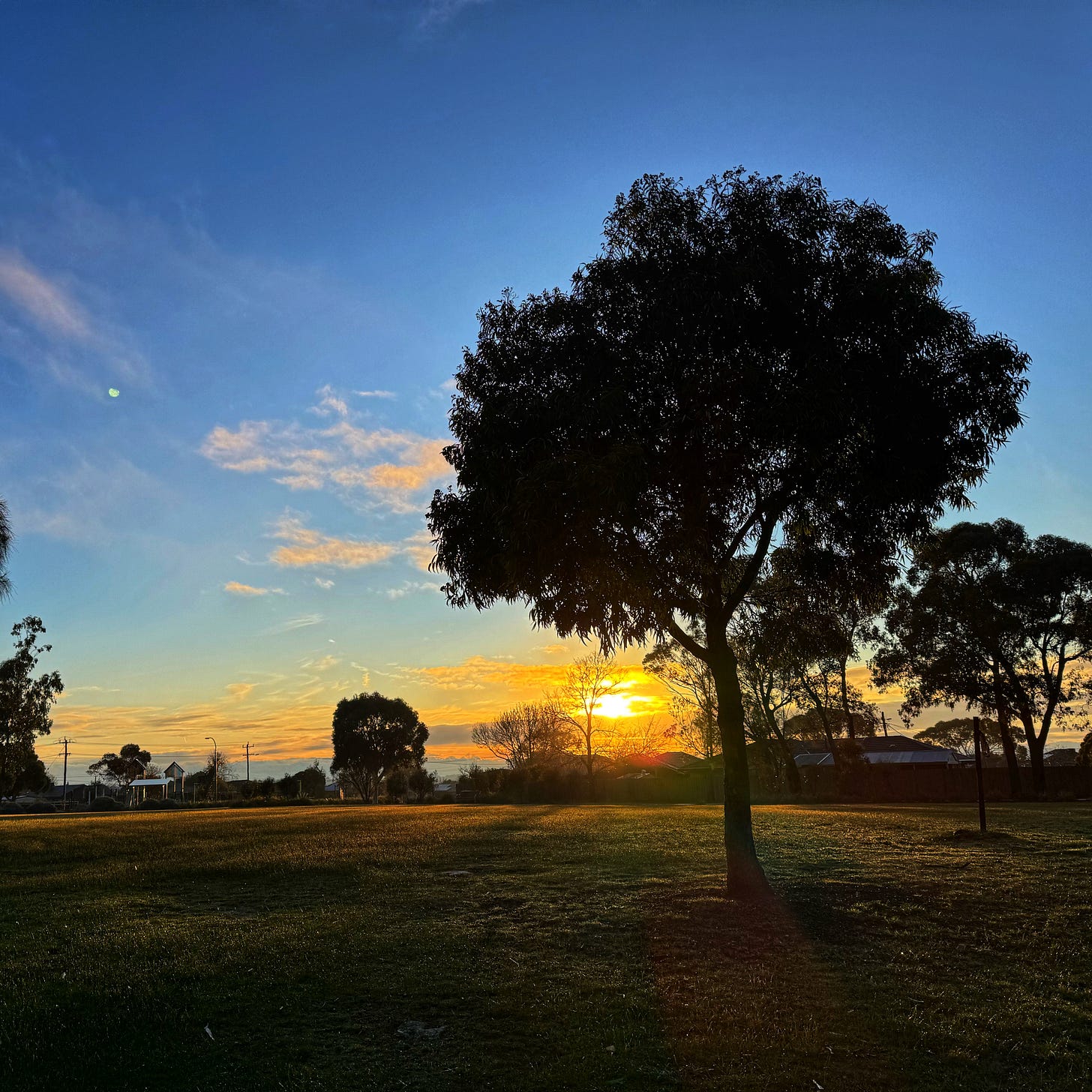
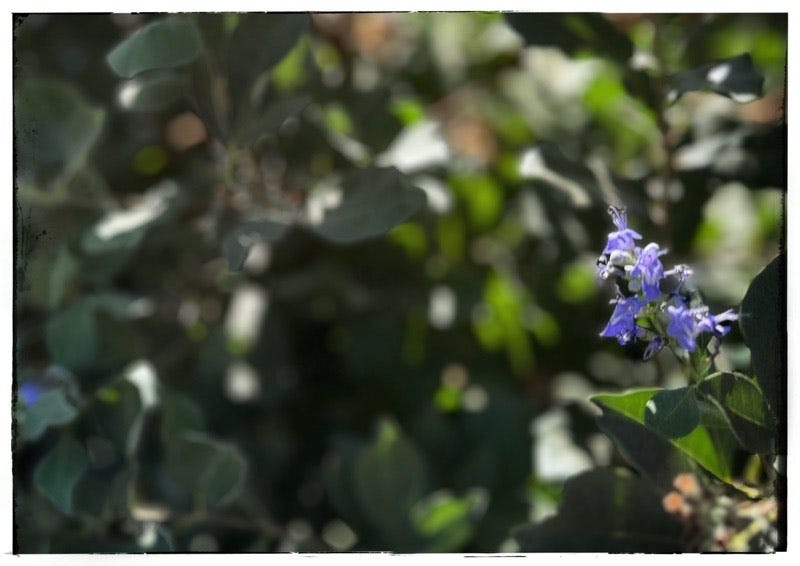
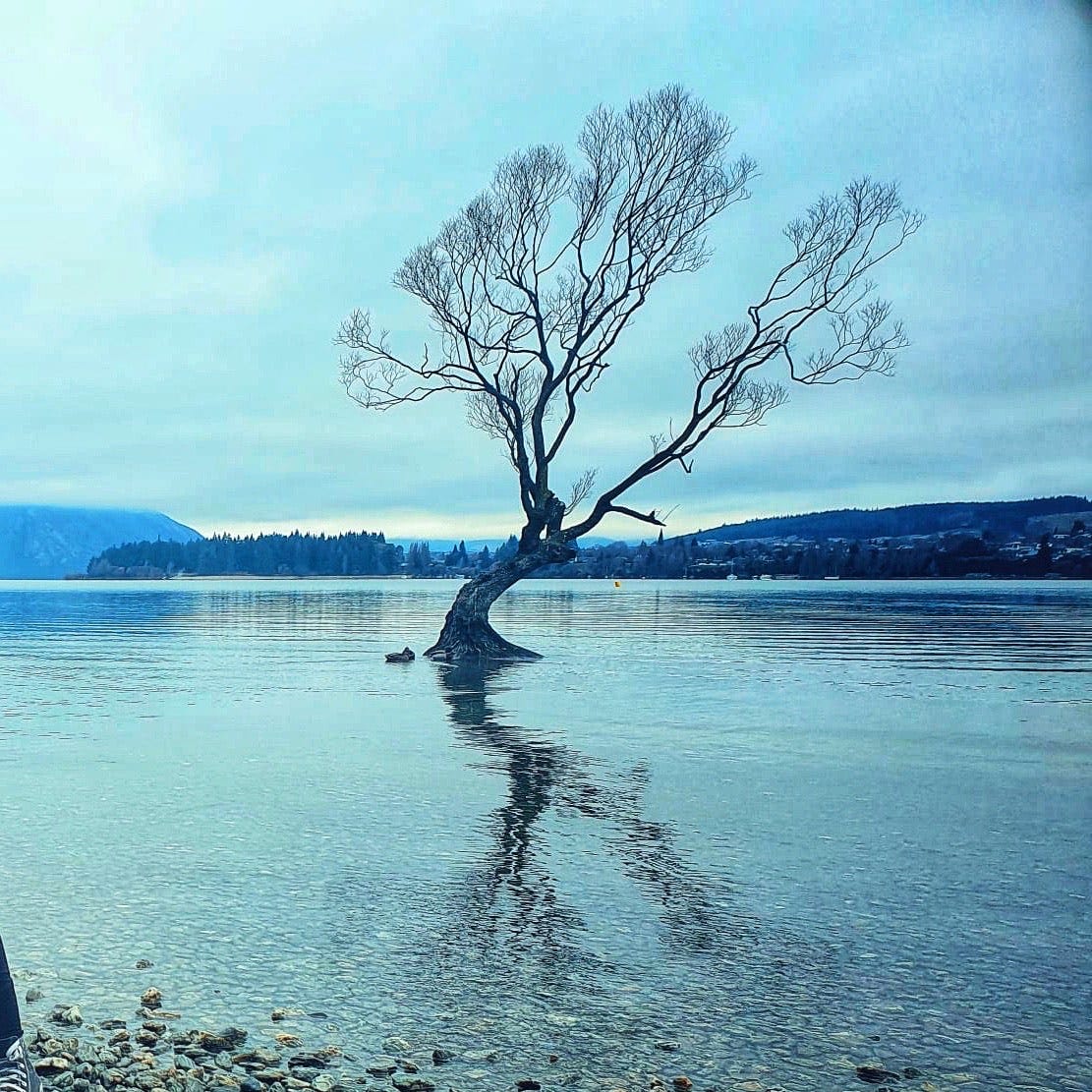
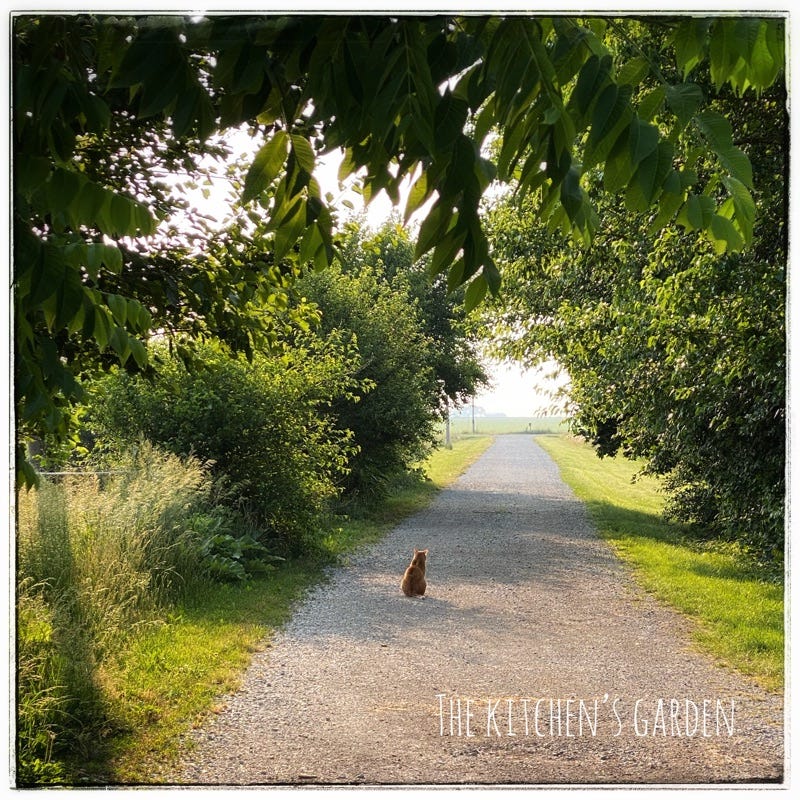
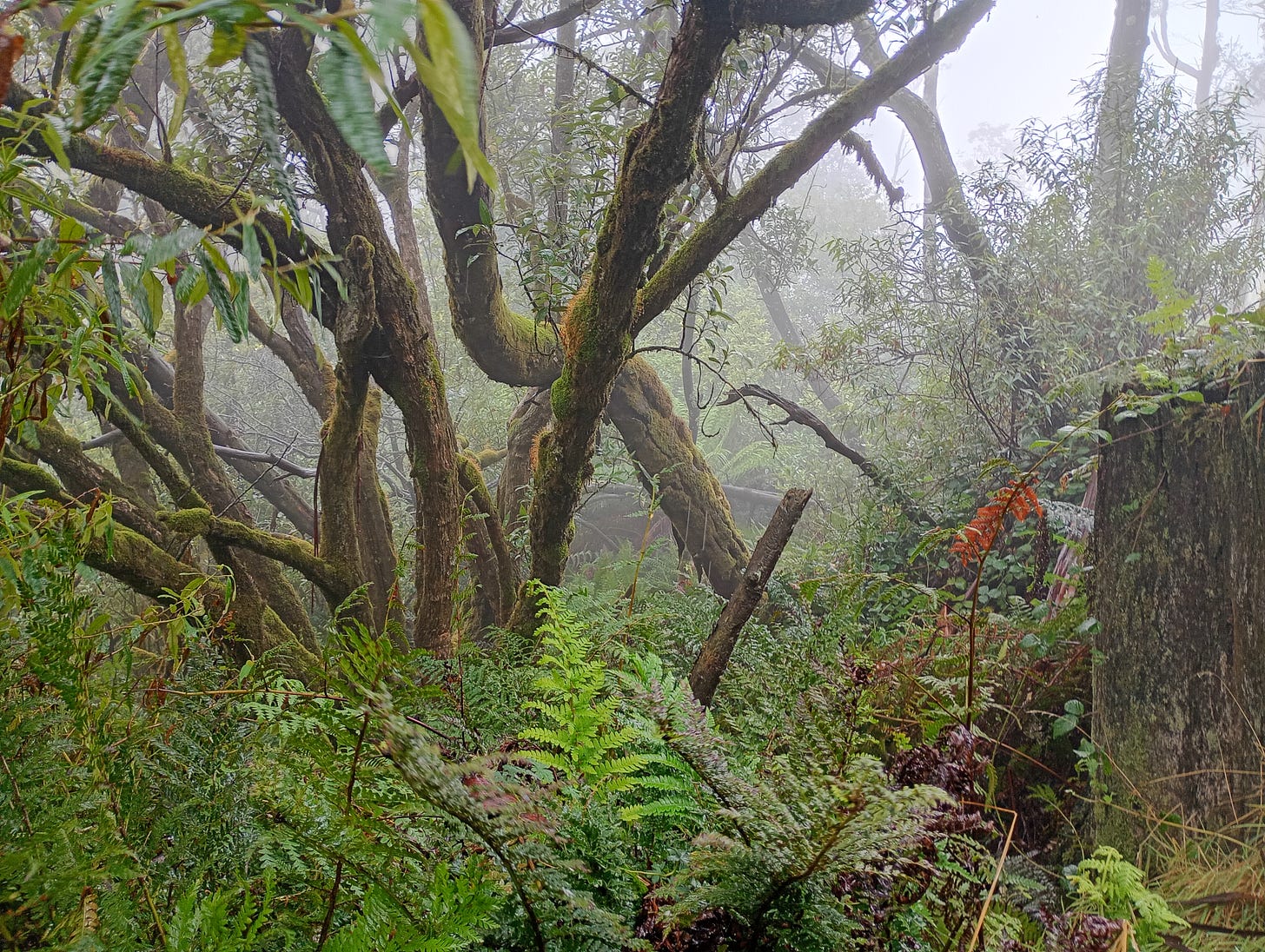
My favorite tree is a very tall fir that is right out my back door in our yard. It's withstood many a storm and has been tended to carefully through the years to make sure that continues to happen. It shades us from the hot late afternoon sun and drips pitch all over everything but I love it anyway. People have threatened to cut it and I've resisted them mightily. I'll never let that happen!
Lovely. trees are my favourite thing. How wonderful that a tree gave your mother support. It's a touching story. My favourite tree is a pōhutukawa. I wrote a book about it: The Pōhutukawa Journal.